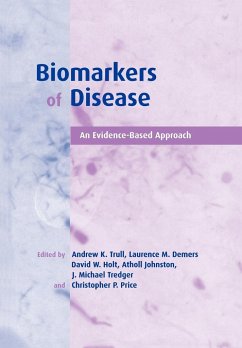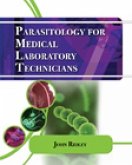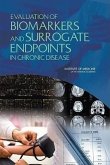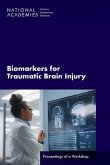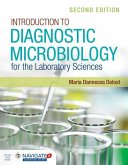Biomarkers of Disease
An Evidence-Based Approach
Herausgeber: Trull, Andrew K.; Holt, David W.; Demers, Lawrence M.
Biomarkers of Disease
An Evidence-Based Approach
Herausgeber: Trull, Andrew K.; Holt, David W.; Demers, Lawrence M.
- Broschiertes Buch
- Merkliste
- Auf die Merkliste
- Bewerten Bewerten
- Teilen
- Produkt teilen
- Produkterinnerung
- Produkterinnerung
A critical, evidence-based look at diagnostic tests which are increasingly being used to evaluate organ damage and dysfunction.
Andere Kunden interessierten sich auch für
![The Laboratory Revolution in Medicine The Laboratory Revolution in Medicine]() Andrew Cunningham / Perry Williams (eds.)The Laboratory Revolution in Medicine65,99 €
Andrew Cunningham / Perry Williams (eds.)The Laboratory Revolution in Medicine65,99 €![Parasitology for Medical and Clinical Laboratory Professionals Parasitology for Medical and Clinical Laboratory Professionals]() John RidleyParasitology for Medical and Clinical Laboratory Professionals89,99 €
John RidleyParasitology for Medical and Clinical Laboratory Professionals89,99 €![Critical Care of the Burned Patient Critical Care of the Burned Patient]() Critical Care of the Burned Patient79,99 €
Critical Care of the Burned Patient79,99 €![Evaluation of Biomarkers and Surrogate Endpoints in Chronic Disease Evaluation of Biomarkers and Surrogate Endpoints in Chronic Disease]() Institute Of MedicineEvaluation of Biomarkers and Surrogate Endpoints in Chronic Disease67,99 €
Institute Of MedicineEvaluation of Biomarkers and Surrogate Endpoints in Chronic Disease67,99 €![Lab Literacy for Canadian Doctors Lab Literacy for Canadian Doctors]() Lab Literacy for Canadian Doctors51,99 €
Lab Literacy for Canadian Doctors51,99 €![Biomarkers for Traumatic Brain Injury Biomarkers for Traumatic Brain Injury]() National Academies of Sciences Engineering and MedicineBiomarkers for Traumatic Brain Injury21,99 €
National Academies of Sciences Engineering and MedicineBiomarkers for Traumatic Brain Injury21,99 €![Introduction to Diagnostic Microbiology for the Laboratory Sciences Introduction to Diagnostic Microbiology for the Laboratory Sciences]() Maria Dannessa DelostIntroduction to Diagnostic Microbiology for the Laboratory Sciences129,99 €
Maria Dannessa DelostIntroduction to Diagnostic Microbiology for the Laboratory Sciences129,99 €-
-
-
A critical, evidence-based look at diagnostic tests which are increasingly being used to evaluate organ damage and dysfunction.
Hinweis: Dieser Artikel kann nur an eine deutsche Lieferadresse ausgeliefert werden.
Hinweis: Dieser Artikel kann nur an eine deutsche Lieferadresse ausgeliefert werden.
Produktdetails
- Produktdetails
- Verlag: Cambridge University Press
- Seitenzahl: 520
- Erscheinungstermin: 29. Juli 2008
- Englisch
- Abmessung: 244mm x 170mm x 28mm
- Gewicht: 887g
- ISBN-13: 9780521088602
- ISBN-10: 0521088607
- Artikelnr.: 24927819
- Herstellerkennzeichnung
- Books on Demand GmbH
- In de Tarpen 42
- 22848 Norderstedt
- info@bod.de
- 040 53433511
- Verlag: Cambridge University Press
- Seitenzahl: 520
- Erscheinungstermin: 29. Juli 2008
- Englisch
- Abmessung: 244mm x 170mm x 28mm
- Gewicht: 887g
- ISBN-13: 9780521088602
- ISBN-10: 0521088607
- Artikelnr.: 24927819
- Herstellerkennzeichnung
- Books on Demand GmbH
- In de Tarpen 42
- 22848 Norderstedt
- info@bod.de
- 040 53433511
Part I. Assessing and Utilising the Diagnostic and Prognostic Power of Biomarkers: 1.1. Evidence-based medicine: evaluation of biomarkers
1.2.Development of biomarkers - the industrial perspective
1.3. Statistical approaches to rational biomarker selection
1.4. Using intelligent systems in clinical decision support
Part II. Biomarkers of Kidney Disease and Dysfunction: 2.1. Biomarkers in renal disease
2.2. The genetics of renal disease
2.3. Early markers of nephrotoxicity for environmental and occupational monitoring
2.4. The early detection of renal impairment in diabetes mellitus
Part III. Biomarkers of Bone Disease and Dysfunction: 3.1. Bone turnover markers in clinical practice
3.2. Biomarkers of bone formation
3.3. Biochemical markers of bone resorption
3.4. The clinical application of biomarkers in osteoporosis
3.5. Sources of pre-analytical variability in the measurement of biochemical markers of bone turnover
3.6. Genetic approaches to the study of complex diseases: osteoporosis
Part IV. Biomarkers of Liver Disease and Dysfunction: 4.1. Biomarkers of hepatic disease
4.2. The immunogenetics of metabolic liver disease
4.3. Toxicogenetics of liver dysfunction
4.4. Prognosis and management of patients with acute liver failure
4.5. Biomarkers in artificial and bioartificial support
4.6. Prognostic markers in liver disease
4.7. Apoptosis: biomarkers and the key role of mitochondria
4.8. Liver regeneration: mechanism and markers
4.9. Determinants of response to viruses and self in liver disease
5.0 IL-6-type cytokines and signalling in inflammation
Part V. Biomarkers of Gastrointestinal Disease and Dysfunction: 5.1. Biomarkers in gastrointestinal disease
5.2. Tumour markers in gastrointestinal disease
5.3. Markers of malabsorption: coeliac disease
Part VI. Biomarkers in Toxicology: 6.1. Genomics and biomarkers in toxicology
6.2. Protein profiling and proteomic databases
6.3. Biomarkers for evaluating the safety of genetically modified foods
Part VII. Biomarkers of Cardiovascular Disease and Dysfunction: 7.1. The impact of biochemical tests on patient management
7.2. Cardiac naturetic peptides in risk assessment of patients with acute myocardial infarction or congestive heart failure
7.3. Serum markers of inflammation and cardiovascular risk
7.4. The clinical significance of markers of coagulation in acute coronary syndromes
7.5. Endothelin - what does it tell us about myocardial and endothelial dysfunction?
7.6. Homocysteine - a reversible risk factor for coronary heart disease
7.7. Matrix metalloproteinases and their tissue inhibitors
Part VIII.. Biomarkers of Neurological Disease and Dysfunction: 8.1. Biomarkers of neurodegenerative disorders
8.2. Traumatic brain injury: assessment by biochemical serum markers
8.3. An overview of S-100beta as a clinically useful biomarker of brain tissue damage
Part IV. Biomarkers in Transplantation: 9.1. Monitoring heart and lung transplant recipients Marlene Rose
9.2. Monitoring liver transplant recipients
9.3. Chronic allograft damage index as surrogate marker for chronic allograft rejection
9.4. Advances in pharmacodynamic biomarkers for monitoring the response to immunosuppressive drug therapy
9.5. The use of biomarkers for monitoing the response to immunosuppressive drug therapy
9.6. Post-transplantation bone disease
9.7. Molecular diagnosis of cytomegalovirus diseases
9.8. Diagnosis and monitoring of inflammatory events in transplant recipients
Index.
1.2.Development of biomarkers - the industrial perspective
1.3. Statistical approaches to rational biomarker selection
1.4. Using intelligent systems in clinical decision support
Part II. Biomarkers of Kidney Disease and Dysfunction: 2.1. Biomarkers in renal disease
2.2. The genetics of renal disease
2.3. Early markers of nephrotoxicity for environmental and occupational monitoring
2.4. The early detection of renal impairment in diabetes mellitus
Part III. Biomarkers of Bone Disease and Dysfunction: 3.1. Bone turnover markers in clinical practice
3.2. Biomarkers of bone formation
3.3. Biochemical markers of bone resorption
3.4. The clinical application of biomarkers in osteoporosis
3.5. Sources of pre-analytical variability in the measurement of biochemical markers of bone turnover
3.6. Genetic approaches to the study of complex diseases: osteoporosis
Part IV. Biomarkers of Liver Disease and Dysfunction: 4.1. Biomarkers of hepatic disease
4.2. The immunogenetics of metabolic liver disease
4.3. Toxicogenetics of liver dysfunction
4.4. Prognosis and management of patients with acute liver failure
4.5. Biomarkers in artificial and bioartificial support
4.6. Prognostic markers in liver disease
4.7. Apoptosis: biomarkers and the key role of mitochondria
4.8. Liver regeneration: mechanism and markers
4.9. Determinants of response to viruses and self in liver disease
5.0 IL-6-type cytokines and signalling in inflammation
Part V. Biomarkers of Gastrointestinal Disease and Dysfunction: 5.1. Biomarkers in gastrointestinal disease
5.2. Tumour markers in gastrointestinal disease
5.3. Markers of malabsorption: coeliac disease
Part VI. Biomarkers in Toxicology: 6.1. Genomics and biomarkers in toxicology
6.2. Protein profiling and proteomic databases
6.3. Biomarkers for evaluating the safety of genetically modified foods
Part VII. Biomarkers of Cardiovascular Disease and Dysfunction: 7.1. The impact of biochemical tests on patient management
7.2. Cardiac naturetic peptides in risk assessment of patients with acute myocardial infarction or congestive heart failure
7.3. Serum markers of inflammation and cardiovascular risk
7.4. The clinical significance of markers of coagulation in acute coronary syndromes
7.5. Endothelin - what does it tell us about myocardial and endothelial dysfunction?
7.6. Homocysteine - a reversible risk factor for coronary heart disease
7.7. Matrix metalloproteinases and their tissue inhibitors
Part VIII.. Biomarkers of Neurological Disease and Dysfunction: 8.1. Biomarkers of neurodegenerative disorders
8.2. Traumatic brain injury: assessment by biochemical serum markers
8.3. An overview of S-100beta as a clinically useful biomarker of brain tissue damage
Part IV. Biomarkers in Transplantation: 9.1. Monitoring heart and lung transplant recipients Marlene Rose
9.2. Monitoring liver transplant recipients
9.3. Chronic allograft damage index as surrogate marker for chronic allograft rejection
9.4. Advances in pharmacodynamic biomarkers for monitoring the response to immunosuppressive drug therapy
9.5. The use of biomarkers for monitoing the response to immunosuppressive drug therapy
9.6. Post-transplantation bone disease
9.7. Molecular diagnosis of cytomegalovirus diseases
9.8. Diagnosis and monitoring of inflammatory events in transplant recipients
Index.
Part I. Assessing and Utilising the Diagnostic and Prognostic Power of Biomarkers: 1.1. Evidence-based medicine: evaluation of biomarkers
1.2.Development of biomarkers - the industrial perspective
1.3. Statistical approaches to rational biomarker selection
1.4. Using intelligent systems in clinical decision support
Part II. Biomarkers of Kidney Disease and Dysfunction: 2.1. Biomarkers in renal disease
2.2. The genetics of renal disease
2.3. Early markers of nephrotoxicity for environmental and occupational monitoring
2.4. The early detection of renal impairment in diabetes mellitus
Part III. Biomarkers of Bone Disease and Dysfunction: 3.1. Bone turnover markers in clinical practice
3.2. Biomarkers of bone formation
3.3. Biochemical markers of bone resorption
3.4. The clinical application of biomarkers in osteoporosis
3.5. Sources of pre-analytical variability in the measurement of biochemical markers of bone turnover
3.6. Genetic approaches to the study of complex diseases: osteoporosis
Part IV. Biomarkers of Liver Disease and Dysfunction: 4.1. Biomarkers of hepatic disease
4.2. The immunogenetics of metabolic liver disease
4.3. Toxicogenetics of liver dysfunction
4.4. Prognosis and management of patients with acute liver failure
4.5. Biomarkers in artificial and bioartificial support
4.6. Prognostic markers in liver disease
4.7. Apoptosis: biomarkers and the key role of mitochondria
4.8. Liver regeneration: mechanism and markers
4.9. Determinants of response to viruses and self in liver disease
5.0 IL-6-type cytokines and signalling in inflammation
Part V. Biomarkers of Gastrointestinal Disease and Dysfunction: 5.1. Biomarkers in gastrointestinal disease
5.2. Tumour markers in gastrointestinal disease
5.3. Markers of malabsorption: coeliac disease
Part VI. Biomarkers in Toxicology: 6.1. Genomics and biomarkers in toxicology
6.2. Protein profiling and proteomic databases
6.3. Biomarkers for evaluating the safety of genetically modified foods
Part VII. Biomarkers of Cardiovascular Disease and Dysfunction: 7.1. The impact of biochemical tests on patient management
7.2. Cardiac naturetic peptides in risk assessment of patients with acute myocardial infarction or congestive heart failure
7.3. Serum markers of inflammation and cardiovascular risk
7.4. The clinical significance of markers of coagulation in acute coronary syndromes
7.5. Endothelin - what does it tell us about myocardial and endothelial dysfunction?
7.6. Homocysteine - a reversible risk factor for coronary heart disease
7.7. Matrix metalloproteinases and their tissue inhibitors
Part VIII.. Biomarkers of Neurological Disease and Dysfunction: 8.1. Biomarkers of neurodegenerative disorders
8.2. Traumatic brain injury: assessment by biochemical serum markers
8.3. An overview of S-100beta as a clinically useful biomarker of brain tissue damage
Part IV. Biomarkers in Transplantation: 9.1. Monitoring heart and lung transplant recipients Marlene Rose
9.2. Monitoring liver transplant recipients
9.3. Chronic allograft damage index as surrogate marker for chronic allograft rejection
9.4. Advances in pharmacodynamic biomarkers for monitoring the response to immunosuppressive drug therapy
9.5. The use of biomarkers for monitoing the response to immunosuppressive drug therapy
9.6. Post-transplantation bone disease
9.7. Molecular diagnosis of cytomegalovirus diseases
9.8. Diagnosis and monitoring of inflammatory events in transplant recipients
Index.
1.2.Development of biomarkers - the industrial perspective
1.3. Statistical approaches to rational biomarker selection
1.4. Using intelligent systems in clinical decision support
Part II. Biomarkers of Kidney Disease and Dysfunction: 2.1. Biomarkers in renal disease
2.2. The genetics of renal disease
2.3. Early markers of nephrotoxicity for environmental and occupational monitoring
2.4. The early detection of renal impairment in diabetes mellitus
Part III. Biomarkers of Bone Disease and Dysfunction: 3.1. Bone turnover markers in clinical practice
3.2. Biomarkers of bone formation
3.3. Biochemical markers of bone resorption
3.4. The clinical application of biomarkers in osteoporosis
3.5. Sources of pre-analytical variability in the measurement of biochemical markers of bone turnover
3.6. Genetic approaches to the study of complex diseases: osteoporosis
Part IV. Biomarkers of Liver Disease and Dysfunction: 4.1. Biomarkers of hepatic disease
4.2. The immunogenetics of metabolic liver disease
4.3. Toxicogenetics of liver dysfunction
4.4. Prognosis and management of patients with acute liver failure
4.5. Biomarkers in artificial and bioartificial support
4.6. Prognostic markers in liver disease
4.7. Apoptosis: biomarkers and the key role of mitochondria
4.8. Liver regeneration: mechanism and markers
4.9. Determinants of response to viruses and self in liver disease
5.0 IL-6-type cytokines and signalling in inflammation
Part V. Biomarkers of Gastrointestinal Disease and Dysfunction: 5.1. Biomarkers in gastrointestinal disease
5.2. Tumour markers in gastrointestinal disease
5.3. Markers of malabsorption: coeliac disease
Part VI. Biomarkers in Toxicology: 6.1. Genomics and biomarkers in toxicology
6.2. Protein profiling and proteomic databases
6.3. Biomarkers for evaluating the safety of genetically modified foods
Part VII. Biomarkers of Cardiovascular Disease and Dysfunction: 7.1. The impact of biochemical tests on patient management
7.2. Cardiac naturetic peptides in risk assessment of patients with acute myocardial infarction or congestive heart failure
7.3. Serum markers of inflammation and cardiovascular risk
7.4. The clinical significance of markers of coagulation in acute coronary syndromes
7.5. Endothelin - what does it tell us about myocardial and endothelial dysfunction?
7.6. Homocysteine - a reversible risk factor for coronary heart disease
7.7. Matrix metalloproteinases and their tissue inhibitors
Part VIII.. Biomarkers of Neurological Disease and Dysfunction: 8.1. Biomarkers of neurodegenerative disorders
8.2. Traumatic brain injury: assessment by biochemical serum markers
8.3. An overview of S-100beta as a clinically useful biomarker of brain tissue damage
Part IV. Biomarkers in Transplantation: 9.1. Monitoring heart and lung transplant recipients Marlene Rose
9.2. Monitoring liver transplant recipients
9.3. Chronic allograft damage index as surrogate marker for chronic allograft rejection
9.4. Advances in pharmacodynamic biomarkers for monitoring the response to immunosuppressive drug therapy
9.5. The use of biomarkers for monitoing the response to immunosuppressive drug therapy
9.6. Post-transplantation bone disease
9.7. Molecular diagnosis of cytomegalovirus diseases
9.8. Diagnosis and monitoring of inflammatory events in transplant recipients
Index.

